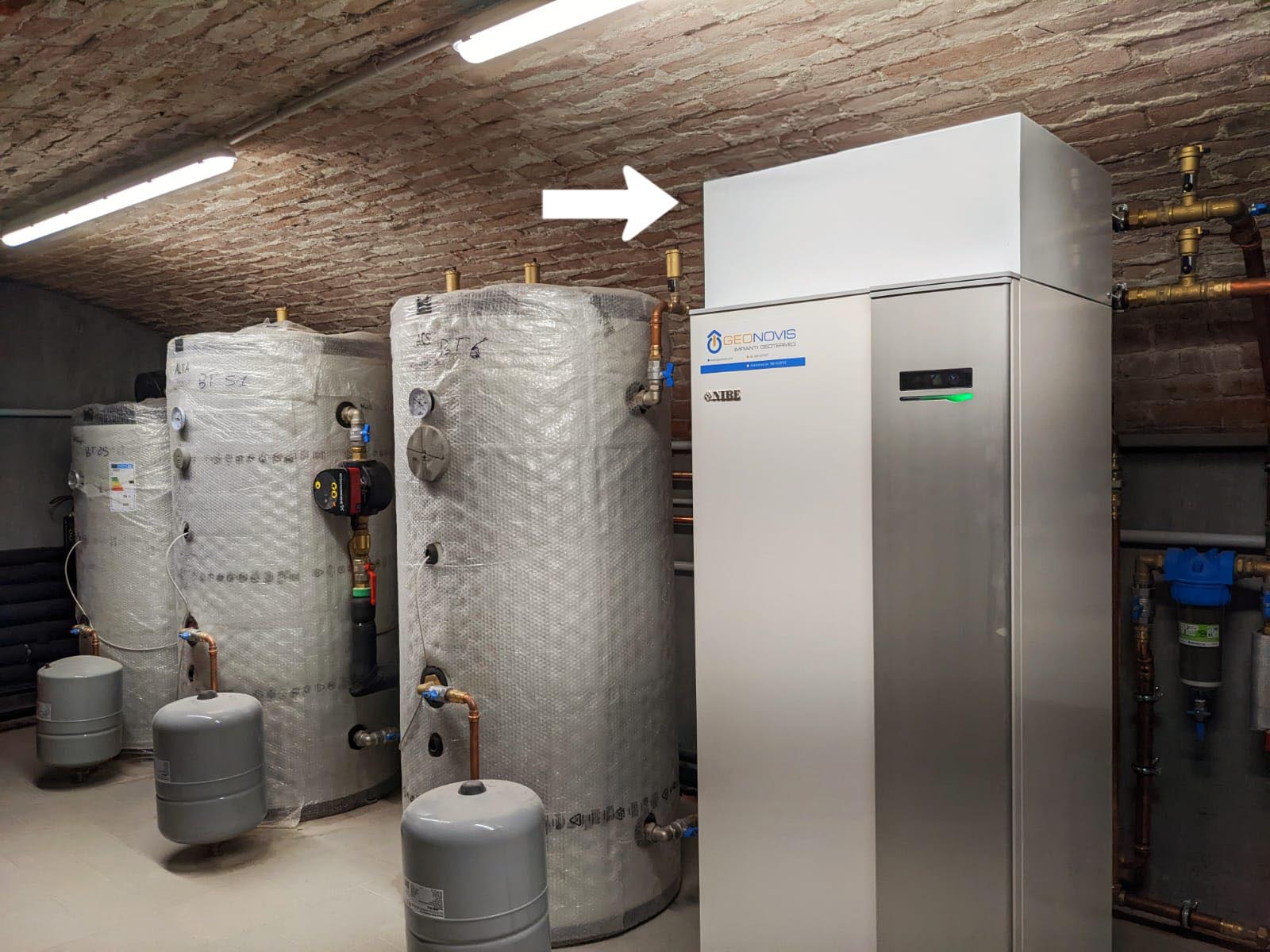HOW TO COOL WITH GEOTHERMAL ENERGY
Even in the case of summer air conditioning, geothermal heat pump systems offer a winning solution for a way of living that combines sustainability with absolute comfort.

Infographic visualization of the change in average temperatures recorded in Italy over the period 1850-2020 created by Ed Hawkins. Source
In a global context of increasingly extreme weather events, including frequent and prolonged unprecedented heat waves, geothermal energy applied to buildings is the only way to combat intense summer heat without feeding the vicious cycle of climate change.
How does this work?
In a very simple way. Two are the possible options:
PASSIVE COOLING
Also called free cooling, it is the best solution in terms of savings and energy efficiency. Taking advantage of the situation for which in summer the temperature of the subsoil and/or groundwater is much lower than the temperature inside buildings, this option allows cooling without activating the compressor of the heat pump. The heat exchange produced only by the circulating pump is able to grant the ideal comfort with reduced electricity consumption.
The glycol water flowing in the distribution circuit collects the heat, and dissipates it into the water table (if we are talking about an open-loop geothermal system) or into the subsurface through geothermal probes (if we are talking about a closed-loop geothermal system), therefore cooling the building.
Radiant distribution systems are the ideal combination to optimize the passive cooling function.
ACTIVE COOLING
This mode is used mainly when outdoor temperatures and proportionately also temperatures inside buildings become too high for the passive cooling option.
In this type of system, the heat pump compressor is activated in reverse cycle to produce cooling energy at the required temperature, dissipating the resulting thermal energy into the subsurface.
This is worth mentioning that this is the only type of cooling possible in the case of air-to-water heat pumps.
NIBE heat pumps are accessorized with the patented HPAC system, which allows automatic activation of the active cooling function (switching from the passive cooling mode) only in case of actual need, thus optimizing comfort, consumption and benefits.
With which distribution systems?
To benefit from the summer air-conditioning function of geothermal systems, a suitable distribution system is necessary. In detail, here are the two most common valid solutions:
Radiant floor, wall or ceiling distribution allows, combined with a dehumidification system, for even and constant cooling, maximizing comfort just as in winter.
The installation of fan coil units, powered by geothermal heat pump systems, generates a type of air conditioning that is quite similar to that of traditional air conditioners, but with a significant reduction in electricity consumption and thus cost.
Geothermal cooling vs. traditional air conditioning
In order to produce cool air for the purpose of air conditioning the interior of buildings, conventional air conditioners constantly emit outward streams of air at a higher temperature than is present. They thus contribute directly to the overheating of the outside environment, especially in cities where there is a greater concentration of air conditioners.
Moreover, air conditioners normally use refrigerant gases known as hydrofluorocarbons (HFCs), which in the event of leaks due to malfunctions (unfortunately not uncommon) contribute to the erosion of the ozone layer and thus in turn participate in global warming.

Instead of dissipating the thermal energy that is generated by producing the cooling energy into the air, geothermal heat pump systems dissipate it into the subsurface or groundwater.
In the case of closed-loop geothermal systems, the advantage is therefore twofold. In fact, by dissipating thermal energy into the subsurface, one goes to “recharge” the probe field, which acts as a huge thermal reserve, storing energy that will be used and enhanced in winter when the heating mode is activated.
Closed-loop geothermal system that harnesses underground energy for sustainable cooling. NIBE’s patented smart cooling accessory (HPAC) is highlighted in the image.
In conclusion, the advantages
The advantages over traditional air conditioning systems are found in terms of:



Sustainability, in that there is a zeroing of the negative impact on the environment inherent in traditional air-conditioning systems
Efficiency, due to the sharp reduction in electricity consumption, and thus operating costs
Rationalization, building systems are simplified as the multifunctionality of a geothermal heat pump system avoids the need for an additional system for the summer

